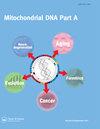利用DNA条形码技术对中药市场上的海洋中药海马干进行鉴定
IF 0.6
4区 生物学
Q4 GENETICS & HEREDITY
引用次数: 26
摘要
海马在中国药典中记载,具有重要的药用价值,是中药的主要成分之一。日益增长的国际贸易威胁着这个物种。DNA条形码技术在野生动物保护中具有很大的应用潜力,可以防止濒危物种的非法贸易。利用COI基因对海马进行鉴定,在中国三大中药市场共发现海马9种。种间遗传变异均大于2%。种间平均遗传距离是种内平均遗传距离的17倍。系统发育树显示,每个物种都聚集在相应的分支上。结果表明,基于coi的条形码技术可用于海马物种鉴定,在监测海马贸易中发挥重要作用。本文章由计算机程序翻译,如有差异,请以英文原文为准。
Identification of marine traditional Chinese medicine dried seahorses in the traditional Chinese medicine market using DNA barcoding
Abstract Seahorse documented in Chinese pharmacopeia possess important medicinal efficacy and are used as an ingredient in traditional Chinese medicines. The growing international trade threatens the species. DNA barcoding holds a great application potentiality in wildlife conservation and might prevent the illegal trade of threatened species. The COI gene was used to identify seahorse, and nine Hippocampus species were found in the three large traditional Chinese medicines markets of China. All inter-specific genetic variations were larger than 2%. Mean genetic distances between species were 17-fold larger than those within the species. Phylogenetic tree showed that each species clustered in the appropriate branch. All results demonstrated that COI-based barcoding technique could be used to identify seahorse species and played a major role in monitoring the seahorse trade.
求助全文
通过发布文献求助,成功后即可免费获取论文全文。
去求助
来源期刊

Mitochondrial Dna Part a
Biochemistry, Genetics and Molecular Biology-Genetics
CiteScore
3.00
自引率
0.00%
发文量
6
期刊介绍:
Mitochondrial DNA Part A publishes original high-quality manuscripts on physical, chemical, and biochemical aspects of mtDNA and proteins involved in mtDNA metabolism, and/or interactions. Manuscripts on cytosolic and extracellular mtDNA, and on dysfunction caused by alterations in mtDNA integrity as well as methodological papers detailing novel approaches for mtDNA manipulation in vitro and in vivo are welcome. Descriptive papers on DNA sequences from mitochondrial genomes, and also analytical papers in the areas of population genetics, phylogenetics and human evolution that use mitochondrial DNA as a source of evidence for studies will be considered for publication. The Journal also considers manuscripts that examine population genetic and systematic theory that specifically address the use of mitochondrial DNA sequences, as well as papers that discuss the utility of mitochondrial DNA information in medical studies and in human evolutionary biology.
 求助内容:
求助内容: 应助结果提醒方式:
应助结果提醒方式:


